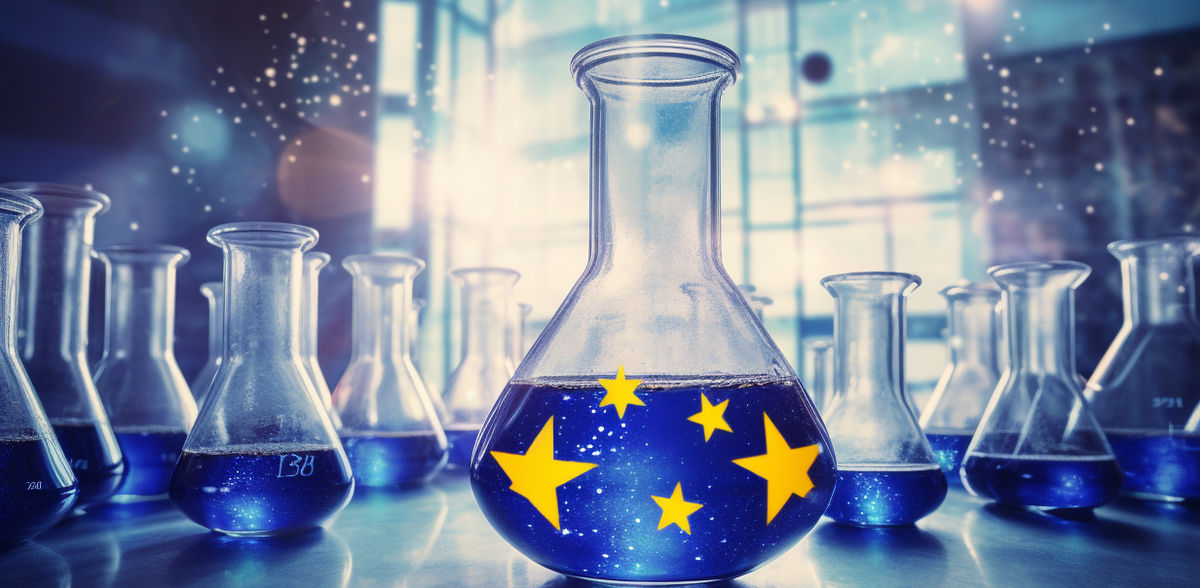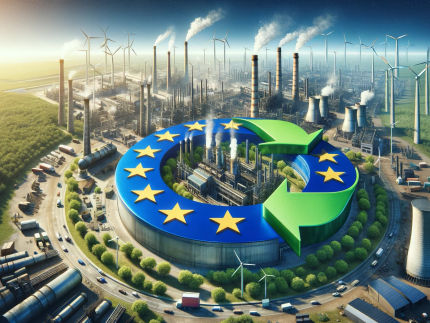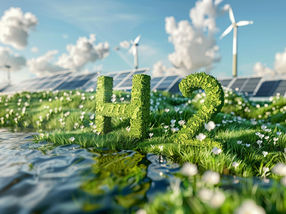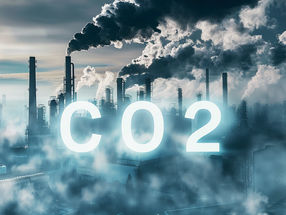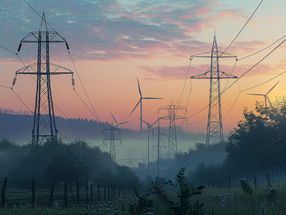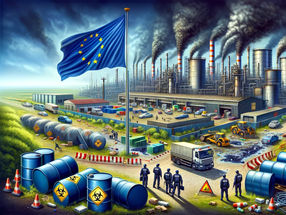At present, Europe is not making sufficient use of its hydrogen potential
A new study recommends stronger cooperation at EU level: Europe has the potential to supply itself with hydrogen in the future
Advertisement
To reach climate neutrality, Europe’s industry will need large quantities of carbon-neutral hydrogen in the future. Many European countries, including Germany, are planning large investments to develop and ramp up the hydrogen industry needed for this. Within the HyPat research project, a new study by Fraunhofer ISI, RIFS Potsdam and the German Energy Agency (dena) makes five recommendations to the EU and the Member States and reveals a significant mismatch between the ratio of current investments and the potentials of individual European regions for low-cost hydrogen production. Furthermore, despite all the efforts made to produce hydrogen domestically, Germany will be an importer of hydrogen in the future.
Windy and sunny countries with high potential to produce low-cost renewable energy could largely meet Europe’s demand for hydrogen in the future and supply hydrogen to those European regions that do not have sufficient economic potentials compared to the demand expected in the future, such as Germany or the Netherlands, However, the investments made in those countries are currently low compared to Germany. Stronger cooperation at EU level could help to steer investments in the right direction.
The study compares two scenarios for different ranges of hydrogen use in Europe with the regional potentials for producing green hydrogen as cheaply as possible. In its analysis, the study focuses on EU policy measures and data on funding hydrogen production and applications in EU countries. Questions concerning infrastructure (storage and transport) were not part of the study.
Europe has the potential to supply itself with hydrogen in the future
The analysis shows that Europe could largely meet its future demand for hydrogen from domestic production at competitive prices. There is the opportunity, therefore, to make European industry less dependent on imports from third countries. According to the study, the technical potential to produce renewable electricity in Europe in 2050 (EU plus Norway, Switzerland and Great Britain) at costs of up to 40 euros per MWh is large enough to meet the entire demand for electricity, including the electricity needed to produce hydrogen, even assuming a widespread use of hydrogen.
Regions with high potential for solar and wind power would play a crucial role in hydrogen production. The biggest potentials for the production of renewable energy in 2050 are found in Norway (more than 1900 TWh), Spain (more than 1760 TWh) and France (more than 1700 TWh). These countries have more potential than they need to meet their own demand, even with a strong domestic use of hydrogen. Countries whose demand exceeds their own potential, i.e., those with a deficit, will have to import the hydrogen they need.
Germany will be dependent on hydrogen imports despite its ambitious targets for expanding electrolysis
France is currently planning 6.5 Gigawatts of electrolysis capacity by 2030, while Spain recently raised its target from 4 Gigawatts to 11 Gigawatts, putting it in first place in Europe at present. The German government’s National Hydrogen Strategy plans 10 Gigawatts of electrolysis capacity for hydrogen production by 2030. In spite of these targets, Germany will not be able to meet its demand on its own.
According to the study, Germany’s future demand is more than double its potential for expanding renewable energies. In 2050, Germany could be the deficit country with the largest absolute supply gap within the EU: Even with a limited range of applications, there would be a shortfall of more than 550 TWh of renewable energy, according to the researchers (see figure). Conclusion: In the long term, Germany will have to rely on imports of energy and hydrogen to supply its domestic industries. Other countries with larger supply gaps include the Netherlands, Belgium and the Czech Republic.
Investments in hydrogen are not optimally distributed
The European Union is not fully exploiting the potentials identified by the study to meet the targets for producing green hydrogen. The researchers point out that investments in hydrogen production and use are failing to include some of the most promising regions. Germany, France and Great Britain are currently investing the most in developing a hydrogen industry. Several projects are currently planned in Spain, but the investment volume at national level falls far short of the potential in the sunny country. The study also criticizes the fact that the EU’s current funding programs, such as the EU Innovation Fund, would only make this imbalance worse.
The study makes a number of proposals that could help to better distribute investments in Europe and provide more targeted support for the market ramp-up of the hydrogen industry in countries with high potential.
- Recommendation 1: Scale up EU-level funding for hydrogen projects related to both production and use (for example, green production methods for chemical products based on hydrogen instead of fossil energy sources). Cumulating this funding with national state aid must be avoided, as has already been done in the EU’s hydrogen auctions, which will be starting soon.
- Recommendation 2: Enable cross-border auctions for green hydrogen. The “auctions as a service” (AaaS) model, which the EU is promoting as an additional option in its hydrogen auctions, should be expanded to include bilateral, cross-border auctions of Member States in order to support the most competitive projects and hydrogen trading within Europe.
- Recommendation 3: Set national expansion targets for renewable electricity in all EU states. This would help the EU to ensure that expanding renewable energies to produce hydrogen does not slow down the decarbonization of national energy systems while additionally supporting particularly ambitious regions, for example through simplified reporting obligations when marketing renewable hydrogen.
- Recommendation 4: Develop bilateral or regional hydrogen partnerships between countries with a surplus and those with a deficit. EU renewable targets allow a flexible split between producing and using countries when accounting for hydrogen and its derivatives. Bilateral or regional partnerships could form the basis for collaboration between surplus and deficit countries.
- Recommendation 5: Focus hydrogen use in deficit countries on sectors that are the hardest to electrify. In certain sectors of energy-intensive industries, aviation and shipping, future hydrogen use is considered a no-regret option. In order to keep the supply gaps in deficit countries and thus the overall demand for hydrogen as small as possible, both national and EU-wide support for market ramp-up could be limited to these sectors.
The researchers criticize the high complexity of current EU regulations and support programs, which is as a major problem. In comparison to this, the U.S. government’s tax-based funding programs through the U.S. Inflation Reduction Act are much more attractive to investors. The study’s author, Prof. Rainer Quitzow from RIFS Potsdam, comments: “The EU cannot replicate the tax concessions of the U.S. government. With the new auction concept for allocating funding, the EU has created an easy-to-use tool. But this must now be backed by substantial funding. Bilateral cooperation between Member States could provide further impetus so that the potentials in Member States that are less financially strong can still be leveraged.”
Dr. Eva Schmid, who heads the HyPat project at the German Energy Agency (dena), assesses the situation: “10 Gigawatts of electrolysis capacity are planned to be installed in Germany by 2030. That is a huge undertaking and there is no time to be lost. In addition to production and transport, this also involves setting up the necessary value chains. Furthermore, up to 70 percent of Germany’s hydrogen demand will have to be imported. Both challenges mean collaboration with international and especially European partners is becoming increasingly important. This HyPat study provides important new insights to this.”
Study author Dr. Jakob Wachsmuth from Fraunhofer ISI draws the conclusion: “Hydrogen will be a scarce commodity in the coming years. Greater cooperation between countries will be needed to meet the hydrogen demand of European industry. Especially in large industrial nations like Germany, this could become a problem if the political and financial course for intra-European trade is not charted early enough. In terms of using hydrogen, setting clear priorities for specific applications could help to make efficient use of the existing, limited potentials.”
Background: The HyPat project
The HyPat project is funded by the German Federal Ministry of Education and Research (BMBF) with technical and administrative support provided by the Project Management Jülich. Alongside Fraunhofer ISI as the project lead, eight other partners are involved in the project: Fraunhofer IEG, Fraunhofer ISE, Ruhr Universität Bochum, Energy Systems Analysis Associates – ESA² GmbH, German Institute of Development and Sustainability IDOS, RIFS Potsdam, GIZ Deutsche Gesellschaft für Internationale Zusammenarbeit and the German Energy Agency (dena).
